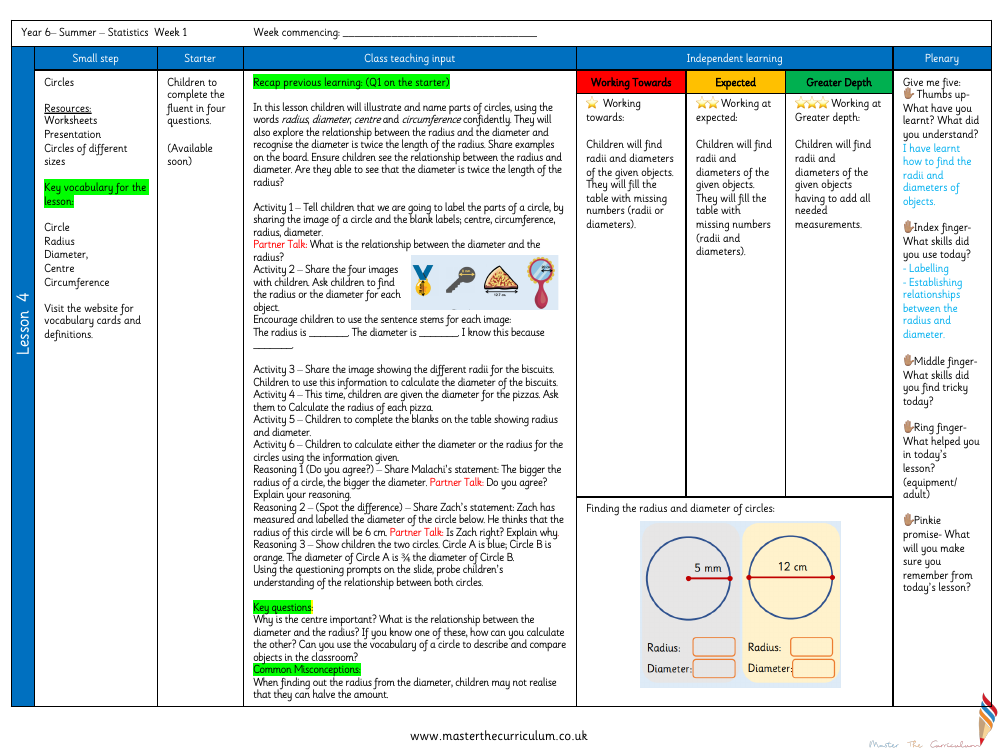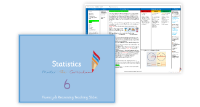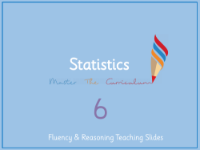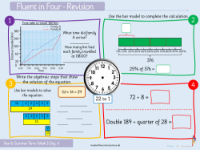Statistics - Circles - Planning

Maths Resource Description
In a Year 6 statistics lesson focused on circles, students are introduced to the key components of a circle including the radius, diameter, centre, and circumference. The lesson aims to familiarise students with these terms and to help them understand the relationship between the radius and diameter, specifically that the diameter is twice the length of the radius. The lesson begins with a starter activity to recap previous learning, followed by a class teaching input where students are shown examples on the board to reinforce the relationship between the radius and diameter. Students are encouraged to discuss and recognise that the diameter is always twice the length of the radius.
The lesson comprises a series of activities where children label parts of a circle, calculate the radius or diameter of various objects, and complete tables with missing measurements. They use sentence stems to articulate their understanding and are challenged with reasoning tasks to deepen their comprehension of the concepts. For instance, they debate whether a larger radius implies a larger diameter and examine the accuracy of a peer's measurements. The lesson concludes with a reflection on what has been learned, the skills used, and any difficulties encountered. Students make a 'pinkie promise' to remember key lesson points. Differentiated outcomes are provided for varying levels of achievement, from working towards the expected level to reaching greater depth, where students are tasked with finding and adding all necessary measurements for given objects.



